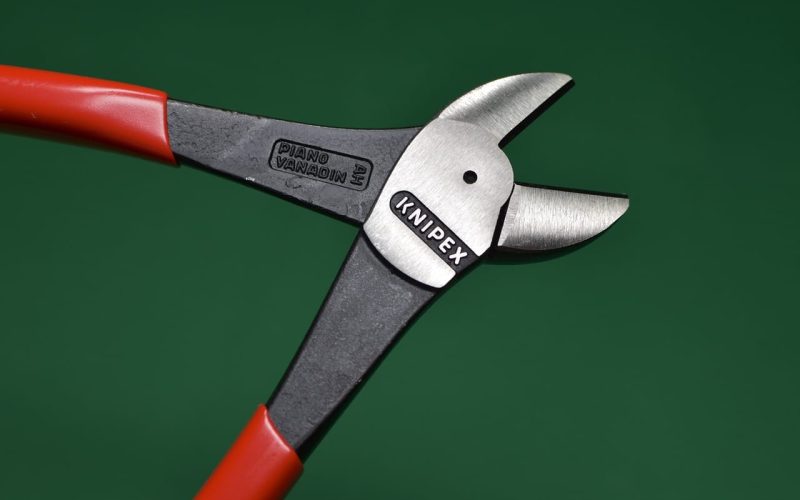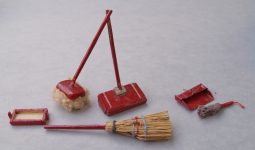If you’re using bolt cutters to cut through metal chains, padlocks, and more, you’ll want to know about several types of bolt cutters. This is to find the best tool for the job.
Having suitable bolt cutters can make the difference between being able to use a bolt and not being able to. It’s hard to know which types of bolt cutters you need.
Especially when you’re in the middle of nowhere and realize that your bolt cutter isn’t working, having the right tool makes cutting through metal simple and easy.
So here are the types of bolt cutters you should be familiar with before you decide which one will work best for your next project.
Parts of Bolt Cutter
Bolt cutters are used by many industries, not just the construction industry.
1. Jaws of Bolt Cutters
Some bolt cutters have only one jaw, while others have two. Single-jaw bolt cutters work in a pinch, but they’re not great at gripping onto bolts. Double-jaw bolt cutters offer better grip when cutting.
This is because there are more points of contact. If you’re cutting thick bolts or bolts in hard materials like metal, you should use a sizeable double-jaw model for these tasks.
Types of bolt cutters with smaller models can do the job, too. Using them on larger objects may take longer and require more effort.
2. Blades of Bolt Cutter
Bolt cutters have serrated blades or plain edges. Serrated blades quickly work even through tough bolts, like those found on truck tires.
However, the serrated edge can cause problems later if you need to screw back any pieces from your cutoffs.
This is because the groove created by serrated blades makes it challenging to get screws back in quickly. Plain edge bolt cutters will slice through tough bolts like butter without leaving a noticeable line or groove afterward.
3. Joints of Bolt Cutter
Joints vary depending on the manufacturer. Some manufacturers create joints that allow quick change out of blades or handles. This depends on whether you want a serrated knife or a plain edge blade.
Other manufacturers have gone out of business, and their products are no longer being manufactured. This makes spare parts difficult to find.
If your bolt cutter doesn’t include replaceable handles and requires you to replace the entire unit, store it properly after each use so it doesn’t rust and corrode over time.
4. Adjustment Bolts of Bolt Cutter
Consider how much adjusting you need when choosing between single-jointed and double-jointed bolt cutters. If you don’t anticipate needing any adjustments, go with a single-joint model. If you do, a double-jointed design would be best suited for your needs.
Sometimes, the adjustment bolts are hidden under rubber caps. Other times, they protrude outside the body and have grooves to provide grip when turning them.
5. Handles of Bolt Cutter
Look at the grips when shopping for bolt cutters. Most of the time, different bolt cutters are designed to be operated with one hand.
This means they typically have a contoured shape near the opening where you place your fingers and thumb. Grip size varies depending on preference.
For heavier-duty bolt cutters designed for bigger jobs, look for one with thicker grips. Grips distribute weight across a wider area of your palm rather than focus pressure on smaller areas of your fingers.
Different Types of Bolt Cutters
1. Hydraulic Bolt Cutter
While not technical, hydraulic bolt cutters typically refer to bolt cutters that use oil or hydraulics. The most common way this is accomplished is by having a rack and pinion mechanism.
This mechanism transfers the user’s pressure onto the blade through a hydraulic jack. This can be more powerful than other bolt cutters but can also potentially slow down due to excessive resistance when cutting tough metals.
Unlike air-powered bolt cutters, which are powered by compressed air and result in a jagged break when cutting bolts, hydraulically-powered bolt cutters apply enough pressure on the metal being cut so that it breaks smoothly rather than with rough edges.
2. Manual Bolt Cutter
These types of bolt cutters are heavy and sturdy. They require the operator to use two hands for cutting. And it can take a little more time to see through the metal than with other bolt cutters on this list.
For people who have less mobility or arthritis, manual bolt cutters may be your best bet. They can get the job done while being better on the joints and are easier on your wallet. It would be great if you planned on doing much metal work over time.
Also, this bolt cutter requires more endurance to cut metal. It has a longer lifespan than any other kind and is still helpful even if you decide never to do any metal work again!
3. Compact Bolt Cutters
One of the most common uses for all bolt cutters is for people who enjoy opening locks. A bolt cutter can be used for this because it is made from hardened steel and has sharp edges.
However, not all types of bolt cutters will do the job well. Compact bolt cutters are a good choice for lock picking because they are easy to maneuver and inexpensive. The main downside to compact bolt cutters is that they are not very versatile.
Also, they cannot easily be converted from one type of shear mechanism to another. The radius shear bolt cutter will have more features than the compact. It is typically quite expensive as well, with only an occasional discount.
4. Ratchet Bolt Cutters
Ratcheting bolt cutters, known as twisting-handle or crescent-head bolt cutters, were developed in the mid-20th century.
Their unique design is more efficient at cutting hardened material than traditional bolt cutters, which rely on a straight blade.
To use ratcheting bolts, you need a specific hand motion. This motion starts with grasping the handles and levering the bolt cutter into a curved shape by pivoting your hands and pressing your thumbs together.
Keep in mind that ratcheting bolts are bulkier than their straight-blade counterparts.
5. End Cut Bolt Cutters
End-cut bolt cutters are one of the most common types. They’re probably what you would call a standard bolt cutter.
They have a cutting wheel in the center that slices through bolts and a handle for leverage. This design is widely used because it’s simple and works well.
However, end-cut bolt cutters are unsuitable for bolts with nuts on both sides or hexagonal heads. For these bolts, scissors or lever-type knives will be better suited.
6. Shear Cut Bolt Cutters
A shear-cut bolt cutter works like a pair of scissors. It is appropriate for light-duty cutting and is used on thin material.
Some bolt cutters, such as the Westcott Low Profile Bolt Cutter, are designed for heavier work and may offer more power in the tool’s jaws for cutting heavier metals.
Also, they feature smaller handles, allowing greater leverage and increased torque when applying pressure on the handles.
But don’t forget: Lightly coated metals with smooth or lightly roughened surfaces may be vulnerable. Vulnerable to nicks and scratches from this type of tool!
7. Angled Bolt Cutters
Bolt cutters are among the most common cutting tools used worldwide. They’re usually made from steel or forged carbon steel and come in various shapes, weights, and colors.
Angled bolt cutters are different from their flat-shaped counterparts. This is because they’re made for specific jobs.
More specifically, these types of bolt cutters have angled blades. This allows easier access to the bolts in tight spaces between objects.
With an edge on both sides of the handle, this tool is perfect for delicate work—work that would be difficult with regular flat bolt cutters or standard pliers because they typically can’t fit into tighter spaces like this.
8. Clipper Cut Bolt Cutters
The Clipper Cut bolt cutter is among the types of bolt cutters that can be quickly used to cut bolts and other metal items.
The item works by rotating the tool’s lower jaws through the metal, clamping it, and then turning the handles. Teeth along the cutting edge of these jaws allow for a more precise cutting motion.
This type of bolt cutter may be necessary if you have an older bolt or nut that cannot easily be accessed. However, while they work well on bolts, they don’t work well on metals like steel plates or thick nails.
9. Center Cut Bolt Cutters
The center-cut bolt cutter is a versatile and multi-purpose tool. It can be used in several situations, such as cutting handcuffs, chains, and steel rods.
This cutter operates on the principle that when force is applied to the blade. It will cut through the material by progressively bending it sideways.
Also, this type of bolt cutter uses a V-shaped jaw at a right angle to the handle. When this jaw moves inwards, teeth along its edges bite into the material you are cutting. This forces it towards the stationary jaw – where an adjustable bolt is a pressure point.








